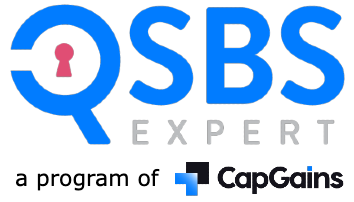Not sure if the stock you’re invested in is QSBS, learn more about our QSBS Monitoring Platform
Simple Agreements for Future Equity, otherwise known as SAFEs, exist thanks to the startup accelerator Y-Combinator’s 2013 innovation.
With a SAFE, an investor makes a cash investment in a company, but the actual amount of stock they receive is determined at a later date, in connection with a specific event, typically the next priced financing round. A SAFE is not a debt security, but was created as an alternative to convertible notes issued in initial funding for early stage startups. According to Y-Combinator, SAFE’s were created for 3 key purposes:
- Debt instruments (i.e. convertible notes) have certain requirements such as conforming to regulations, accruing interest, in some cases security interests, etc, which can have unintended negative consequences.
- SAFEs offer a relatively straightforward funding agreement, really only requiring negotiation of one item, the “valuation cap” which helps determine how many shares the security will ultimately convert into. The simplicity of SAFEs helps to reduce the legal costs associated with early funding rounds, as the cost could be less than half the cost of a priced round (i.e. Series Seed).
- SAFEs have become ubiquitous in early stage funding, leading most of the early stage investing community to become relatively comfortable with their use.
While SAFEs and stocks have many similarities, they are not the same. The latter represents an ownership stake in the company and entitles the holder to certain rights under the law. SAFEs aren’t representative of a current equity stake in the company that you invest in. Instead, they are an agreement to provide you with a future equity stake should a predetermined triggering event occur.
What are the Section 1202 Requirements for QSB “Stock”?
Section 1202(c) defines the requirements of securities eligible for the QSBS tax benefits, noting:
“The term “qualified small business stock” is defined as “any stock in a C corporation which is originally issued after the date of the enactment of the Revenue Reconciliation Act of 1993”.
Since a SAFE is technically not “stock” in the company until it converts, can the IRS ever view a SAFE as “stock” for QSBS purposes? While we are not aware of the IRS having ruled directly on SAFEs as of yet, a Private Letter Ruling from the IRS (#201636003) may offer some guidance for how the IRS may view these securities. In this ruling, an entity that was originally established as an LLC taxed as a C-Corporation later converted to a C-Corporation. The taxpayer sold their shares shortly after the 5-year holding period from when they first acquired their shares in the LLC taxed as a C-Corp, and sought guidance from the IRS in terms of whether the 5-year holding period was met (i.e. if the holding period from when the security interest was in a C-Corp tacked on to when the entity was an LLC taxed as a C-corp. The IRS’ view noted that:
“…the term “stock” for federal tax purposes is not restricted to cases where formal stock certificates have been issued. Rather, it has been a consistent Service position that for federal tax purposes stock ownership is a matter of economic substance, i.e., the right to which the owner has in management, profits, and ultimate assets of a corporation.”
How does the 5-Year Holding Period Affect SAFEs?
The Section 1202 QSB stock capital gain exclusion conditions state that an investor must hold QSBS for at least five years in order to claim exclusion of the disposal gain.
According to Section 1202, “eligible gain means any gain from the sale or exchange of qualified business stock held for more than 5 years.”
This leads to a very important question:
Does the holding period for SAFEs start upon issuance of the SAFE or once they’re converted into equity?
There is an ongoing debate about the qualification of SAFEs as QSBS and how the time at which the “QSBS clock” starts could end up being the difference between an ultimately tax free capital gain or a substantial tax liability on disposal.
Samples of post-money SAFE instruments provided by Y Combinator as a template mention that the parties to the deal can agree to categorize the SAFE as “stock” for federal and state income tax purposes, particularly Section 1202.
“(g)The parties acknowledge and agree that for United States federal and state income tax purposes this Safe is, and at all times has been, intended to be characterized as stock, and more particularly as common stock for purposes of Sections 304, 305, 306, 354, 368, 1036 and 1202 of the Internal Revenue Code of 1986, as amended. Accordingly, the parties agree to treat this Safe consistent with the foregoing intent for all United States federal and state income tax purposes (including, without limitation, on their respective tax returns or other informational statements).”
Note that this language is from Y-Combinator’s example “Post-Money SAFE”, which contain equity-like features that were added to the language from the “Pre-Money” SAFEs, such as dividend rights and the right to receive its “cash-out amount” or “as-converted” value in a liquidation or dissolution event, similar to standard nonparticipating preferred stock.
These terms may help make the post-money SAFE more likely to satisfy the IRS’ “economic substance” requirement. While some tax experts make the argument that all SAFEs qualify as equity for QSBS, others caution that the IRS could argue that SAFEs should be treated as “prepaid forward contracts” and not equity, given the exchange provides for an unknown number of shares in the future.
How may the IRS take the position that the QSBS clock for SAFEs may not start until after conversion?
The IRS could take the position that SAFEs should be treated as a prepaid forward contract for tax purposes. A standard prepaid forward contract involves one party paying cash for an agreement that they will receive a variable number of shares at the settlement date.
Since most SAFEs are structured as such, the IRS can insist that SAFEs have open transaction status instead of equity. This would mean that the QSBS clock on SAFEs will only start upon conversion and delivery of stock, not issuance.
Investors and startups can structure their agreements in a way that the SAFE liquidation preferences are on par with preferred stock, but this would be a departure from the general practice of SAFE holders participating alongside common stockholders in a liquidity event.
Summary
There are opinions to support the contention that a post-money SAFE should be treated as equity if a triggering event will convert it into preferred stock, however this area of tax law is unsettled. We will continue to follow developments until it becomes settled, so proceed with caution if you utilize a portion of a SAFE security holding period towards the 5-year QSBS holding period requirement.
Being mindful of these technicalities when planning an investment in SAFEs can ultimately be the difference between a ~23.8% federal tax liability (~30% including state taxes) or a tax free ultimate gain.
This article does not constitute legal or tax advice. Please consult with your legal or tax advisor with respect to your particular circumstance.

